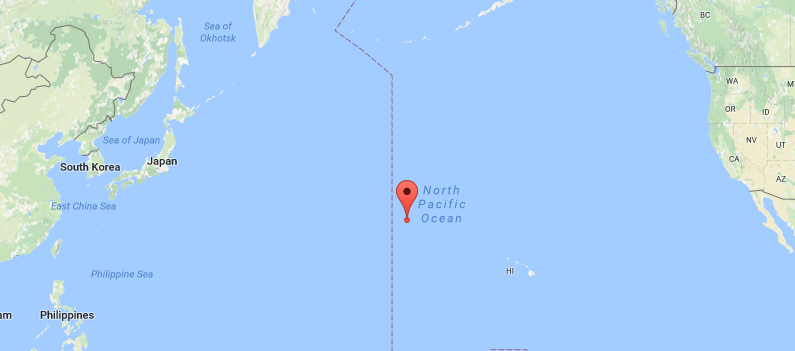How a Creative Codebreaker Changed the Course of WWII

On December 7, 1941, the Imperial Japanese Navy attacked the United States at Pearl Harbor, bringing the U.S. into World War II. Six months later, the Japanese launched an assault at another U.S. Navy base at Midway Atoll, the flagged spot seen in the map above. The Japanese strategy was to, again, hand the Americans a crushing defeat — the Japanese had the Americans outgunned and with better-trained sailors — in hopes of establishing Japanese dominance in the Pacific.
The result was the opposite. The Japanese thought that their attack would come as a surprise, much like the one at Pearl Harbor was. But the Americans were ready. American forces were able to ambush the Japanese fleet, causing devastating damage. The Japanese lost all four of the aircraft carriers they brought to Midway; the American lost only one. The Americans lost about 300 men while the Japanese lost more than 3,000. The Americans won, decisively. Many historians see the Battle of Midway as the turning point of the Pacific theater in World War II — the losses suffered by the Japanese Navy were beyond what they’d be able to replace over the course of the war.
The American ambush was made possible by codebreakers — and required some ingenuity beyond the already-impressive brainpower needed to break codes in the first place. The messages of the Japanese Navy at the time — and therefore its plans — could be relatively easily intercepted. A U.S. Navy intel team, called OP-20-G, had been intercepting messages for months if not years, but those messages were encoded. Before Pearl Harbor, chatter was light, giving OP-20-G a limited amount of raw data to work with. But as the war ramped out, the Japanese communications did as well, giving American intelligence more to go on. They identified a number of different Japanese codes including one they dubbed JN-25, perhaps the most complicated and certainly one of the most important. And in early 1942, the Japanese were using JN-25 to discuss an attack plan, as OP-20-G was able to deduce.
Unfortunately, OP-20-G wasn’t able to fully decode JN-25. While they knew when the attack would take place and with what force, they were unable to decode the location of the assault. All they knew was that the codename of the location was “AF.” While context clues suggested that AF may be Midway, that wasn’t enough — the findings of naval intelligence were going to determine where the already-beleaguered American fleet would be deployed. An intelligence failure could prove catastrophic for the American war effort.
Another naval intelligence office — Station HYPO, located in Hawaii — came up with a plan to verify that AF was indeed Midway: they broadcasted a ruse about the water situation there. The NSA explains:
In an effort to alleviate any doubt, in mid-May the commanding officer of the Midway installation was instructed to send a message in the clear [that is, via an unencoded radio message which was easily intercepted] indicating that the installation’s water distillation plant had suffered serious damage and that fresh water was needed immediately. Shortly after the transmission, an intercepted Japanese intelligence report indicated that “AF is short of water.”
And with that, naval command knew where to send the fleet, allowing for the surprising and critical victory in the Pacific.
Bonus fact: The American victory in Midway was an intelligence success, but the government and military didn’t want the American public finding out — if that happened, the Japanese would find out as well. And yet, that’s exactly what happened. On the last day of the battle, the Chicago Sunday Tribune published a story of the triumph which included the following line: “The strength of the Japanese forces with which the American Navy is battling . . . was well known in American naval circles several days before the battle began. The advance information enabled the American Navy to make full use of air attacks on the approaching Japanese ships.” The Roosevelt administration, seeing this as an obvious reference to the success of American codebreakers, believed that the Tribune put American efforts at risk. The administration, therefore, asked a grand jury to indict the Tribune’s publishers with a violation of the Espionage Act of 1917. The case never went any further, per Wikipedia, “because of government reluctance to present a jury with highly secret information necessary to prosecute the publishers as well as concern that a trial would attract more attention to the case.”
From the Archives: Tanks for the Info: How Allied intelligence figured out how many tanks Germans were making — by reading serial numbers.
Related: “Codebreakers’ Victory: How the Allied Cryptographers Won World War II” by Hervie Haufler. 4.2 stars on 27 reviews.
